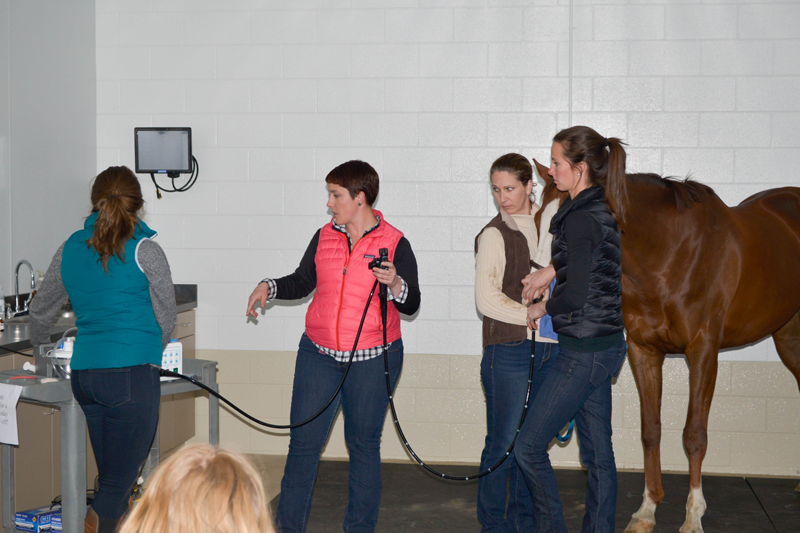Gastroscopy
Gastroscopy
Clinical signs that your horse may exhibit would include acute or recurrent colic, poor body condition, poor performance, decreased appetite, rough/dull hair coat, teeth grinding, and attitude changes. Severity of the clinical signs does not always correlate with the severity of gastric ulcers, but it is a significant disorder that affects a horse’s performance, appetite, and temperament.
The diagnosis of EGUS is based on the presence of clinical signs and confirmation with endoscopic examination. A presumptive diagnosis can be made by clinical signs and response to treatment, but definitive diagnosis needs to be confirmed with an endoscopic examination. We can perform gastroscopy at your farm or in our clinic. Gastric ulcers are graded 1-4 based on the thickening of the mucosa of the stomach and the size and location of the ulcers.


